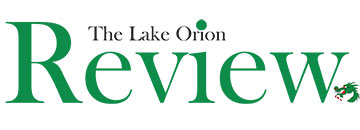By Matt Phillips
Special to The Review
While earning his doctorate degree in Geological Sciences, the thought of becoming a ‘surgeon? never really crossed the mind of Dr. Drew Feustel, a 1983 Lake Orion graduate.
However, now as a NASA astronaut and member of a seven-person crew bound for a mission to repair the Hubble telescope, the references to being a surgeon grow with each training session.
‘This mission is more like brain surgery,? said Lead Flight Director Tony Ceccacci. ‘Due to the intricacy of the equipment, Hubble spacewalks are comparable to standing at an operating table, doing very dexterous work.?
While that reference may sound far-fetched, consider this statistic: By the time the crew of the STS-125 sets off for space on October 8 they will have spent nearly six years training for a mission that will last 11 days.
By comparison, the average general surgeon will spend between 5-7 years training for a lifelong career.
According to Feustel, ‘training through repetition and precise detail allows us to understand every aspect of our task and creates the highest probability for success.?
This mission to repair the Hubble Telescope is unique in that the designers of the telescope never anticipated these repairs would ever be made. Therefore, new methods and equipment had to be designed to carry out these detailed tasks.
Since the crew will perform an unprecedented five back-to-back spacewalks encompassing over 32 hours outside of the shuttle, the training and tools are equally unprecedented.
‘One task that we will be performing involves removing a panel containing 110 tiny screws that were never intended to be removed, in order to replace a computer board,? Feustel said. ‘Now couple that with a weightless environment and you face some additional challenges.?
To address these challenges, NASA Engineers had to design a variety of innovative tools, including a clear plate that will allow the astronauts an unhindered view of the project but will also keep the screws and debris from floating off in space.
To simulate the tasks that will be carried out in space, the crew of STS-125 train in facilities at Goddard Space Flight Center in Greenbelt, Md. and at the Johnson Space Center in Houston.
At the Goddard facility, astronauts practice their tasks on a mock-up of the actual Hubble Telescope with the Hubble designers and engineers, which allows for intense repetitive training and discussion with the engineers on the how’s and why’s of the job.
While this environment allows for greater practice time and interaction, it does not have the feel of space. For that, the astronauts must also practice in the Neutral Buoyancy Laboratory in Houston.
This 6.2 million gallon underwater laboratory contains another Hubble mock up and helps replicate the weightlessness of space.
‘We spend a lot of time underwater since it’s the closest simulation of the environment that we will be working in while in space,? Feustel noted.
‘Since our mission has been delayed a bit, the additional time allows us to further prepare and practice,? Feustel added. ‘But I have to admit that I am getting anxious to actually get the mission underway and put our practice to work in space.?
While some astronauts, like Michigan native Dr. Jerry Linenger, may also be medical doctors, I can now say that I have a new level of appreciation for all of the NASA-trained space surgeons.
To learn more about the Hubble Telescope and the advancements from NASA, make sure to read The Review in July.
